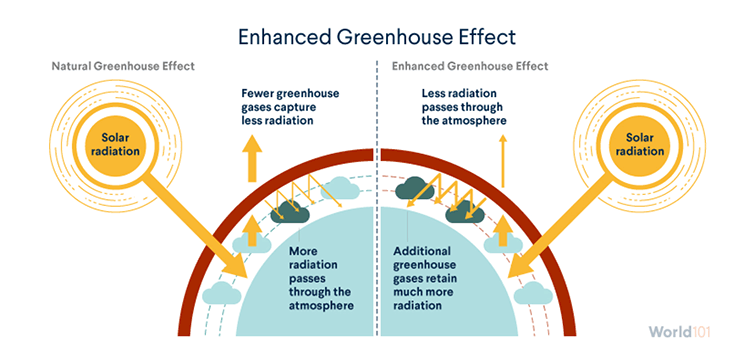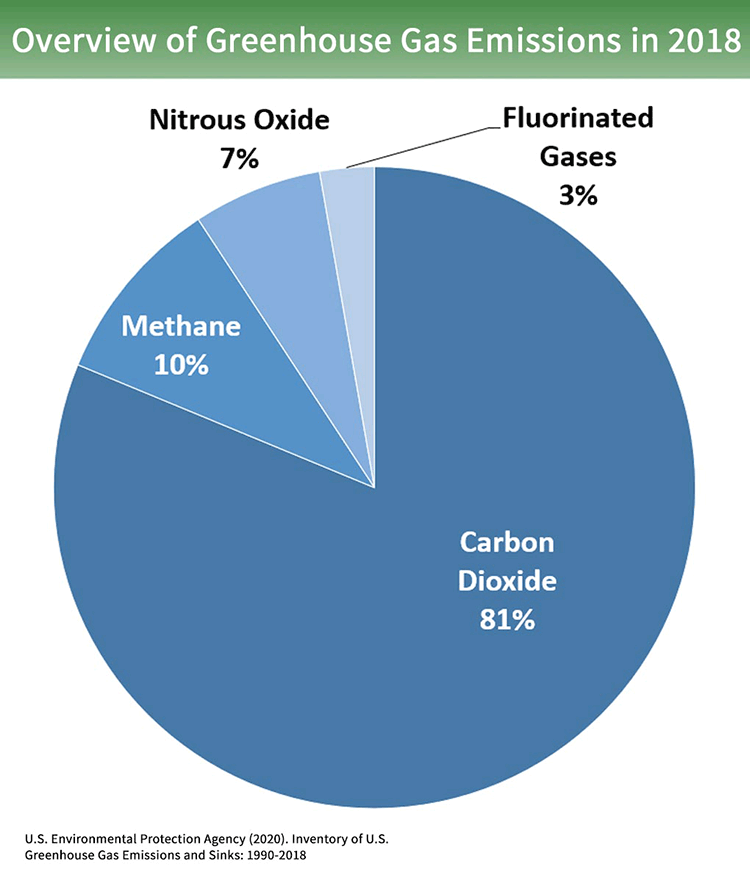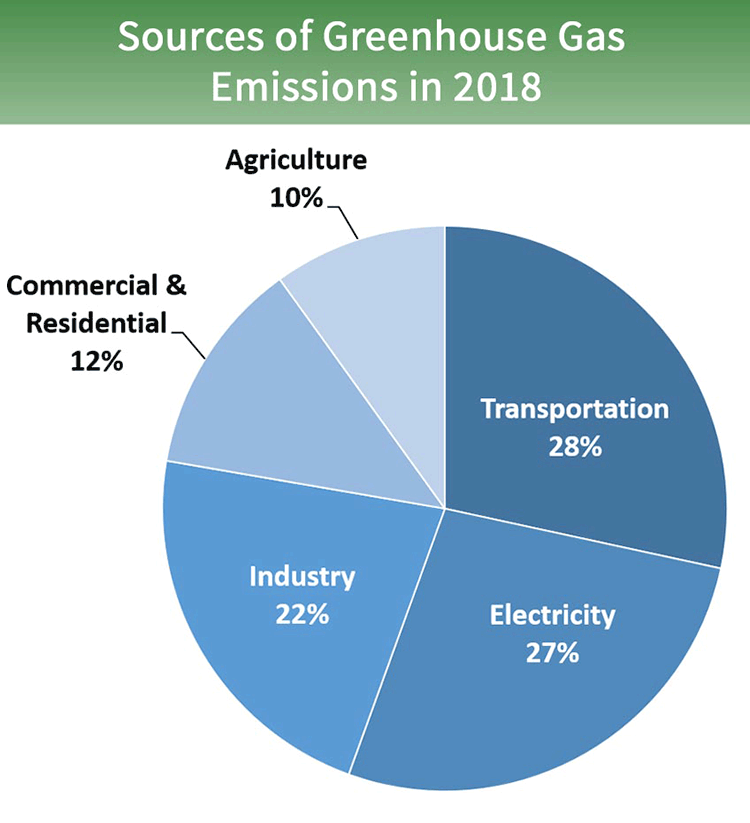MISSION 01
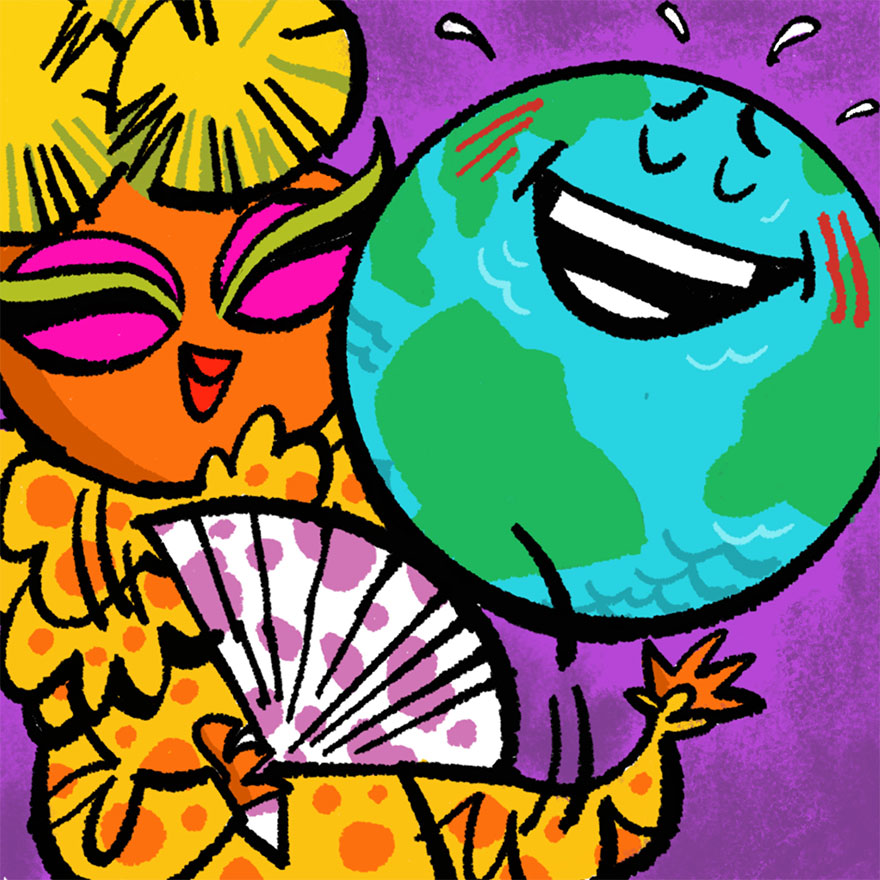
ABOUT
Earth is getting warmer and warmer!
We must act right now!
The atmosphere that surrounds the Earth contains “greenhouse gases”. These gases trap the heat from the Sun on the Earth’s surface and keep the planet’s temperature suitable for living things. Without it the Earth would be too cold for living creatures to survive. Now, however, the greenhouse gases have increased too much and made the Earth too warm…
This is what we call global warming.
There are several kinds of “greenhouse gases” and the most potent gas to warm the planet is carbon dioxide(CO2). Therefore, people talk about global warming together with CO2 reduction.
A ton of CO2 is emitted from human activities and manufacturing.
So, let’s start by reducing the CO2 around us first!
※What are greenhouse gases?... “Greenhouse gases” are gases that absorb infrared rays. The earth’s surface is warmed up by sunlight and emits infrared radiation(IR), and the greenhouse gases and clouds absorb the IR back into the ground(greenhouse effect)to maintain the Earth’s average temperature. As these gases increase, less infrared energy is released into space and the Earth becomes even warmer. Its effect of warming up the Earth is exactly like a greenhouse. At the same time, the ozone layer in the stratosphere warms the Earth by absorbing the solar ultraviolet radiation, which is harmful to human bodies, and then converts the energy into heat. Chlorofluorocarbons(CFCs), which are one type of greenhouse gases are said to be hundreds to ten-thousands times more powerful than the CO2 greenhouse effect. This destroys the ozone layer in the stratosphere, so we also need to make an effort to reduce CFCs.
PROBLEM
What happens when global warming progresses?
It was after the Industrial Revolution in the 18th century that CO2, the cause of global warming, began to increase rapidly. Compared to before the Industrial Revolution, the global average temperature has already increased by 1℃. You may think “Only 1℃?”, however, even 0.5℃ difference has a significant impact on the global environment. For example, when the Earth gets warmer, the ice in the North and South Poles starts melting and wild animals such as penguins and bears that live there will lose their habitat. The global sea level has already risen 10 to 20 cm over the past century and some lands are sinking into the ocean. Animals and plants that inhabit cool environments cannot survive when the temperature gets too high. There are some areas that are turning into deserts due to droughts with no rain, and other areas where natural disasters such as typhoons, tornadoes, and floods occur frequently.
If the glaciers keep melting due to global warming, there will be even fewer places for humans, animals, and plants to live. Extreme weather will prevent food crops from growing, and the world will become a very tough place to live for everyone on Earth.
In fact, the worst bushfire in history happened in Australia and lasted until 2020 and burned a forest area as big as 42 Tokyo cities. It also burned the world heritage-listed Blue Mountains National Park and approximately 1 billion wild animals fell victim to it.
In Miami Beach, Florida in the United States the city has recently struggled with high tide flooding. The countries that participated in the Paris Agreement in 2015 agreed to keep the temperature rise after the Industrial Revolution within 2℃. However, according to the IPCC(Intergovernmental Panel on Climate Change)Special Report on “Global Warming of 1.5℃” in 2018, it will only be possible to avoid various crises by keeping the temperature rise within 1.5℃, not 2℃. To do so, the net global CO2 emissions by humans must be reduced by about 45% from the 2010 level by 2030, and “nearly zero” around 2050.
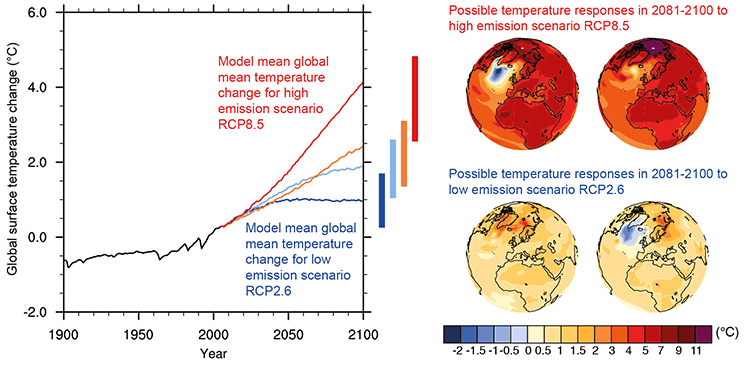
Citing: IPCC, 2013: Climate Change 2013: The Physical Science Basis. Contribution of Working Group I to the Fifth Assessment Report of the Intergovernmental Panel on Climate Change [Stocker, T.F., D. Qin, G.-K. Plattner, M. Tignor, S.K. Allen, J. Boschung, A. Nauels, Y. Xia, V. Bex and P.M. Midgley (eds.)]. Cambridge University Press, Cambridge, United Kingdom and New York, NY, USA
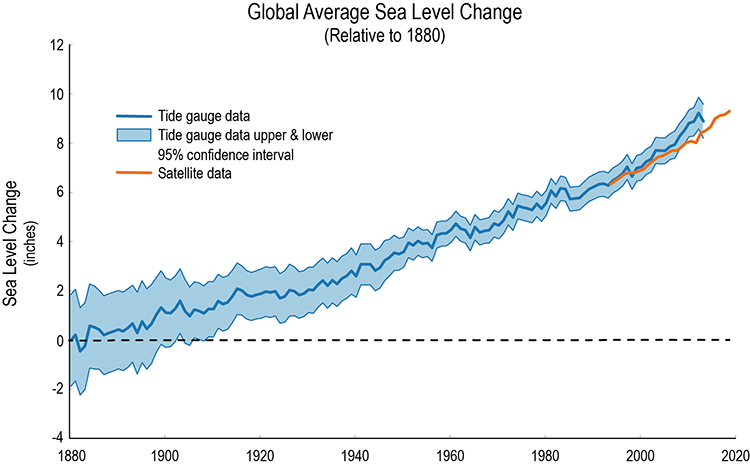
citing: U.S. Global Change Research Program. Rate of global sea level rise is increasing. GlobalChange.gov.
ACTION
Learn about Eco-Labels and buy eco-labeled products
Citing for ECO-LABELS :
Global Ecolabelling Network
Member list
Ecolabelling Standards by Product Category
Bring your eco-bag, your own cutlery, and reduce the use of shopping bags
Switch off lights in rooms that are not in use
Set your air conditioner to 28℃ or higher in summer and 20℃ or lower in winter
In summer, use circulators and fans in combination
Do not overpack the refrigerator with food
Place the refrigerator with an adequate clearance against the wall and do not put anything around or on it
Buy seasonal and local food
Do not stay up too late and try to wake up early
Refrain from using a tumble-drying or using the drying function on washing machines as much as possible
Optimise the brightness of your TV screen
Switch off the main power of the TV when not in use(unplug the TV)
Do not use the keep-warm feature of home appliances(rice cooker, electric kettle, etc.)(*Keep rice in the freezer and defrost it by microwave instead of using the keep-warm feature. Use the microwave for precooking vegetables) Shorten the cooking time by using a pressure cooker, etc.
Save water and use it carefully
Do not unnecessarily raise the water heater temperature when using hot water
Walk or cycle instead of riding in a car or motorcycle when going somewhere nearby
When driving a car, refrain from sudden stops or acceleration, and avoid idling while the car is stationary
Use energy saving lighting such as high-efficiency fluorescent lamps, LED bulbs, etc.
Try replacing batteries with rechargeable batteries(secondary batteries)
Get interested in green electricity which is generated by environmentally friendly processes
Take the stairs instead of the elevator as much as possible
Stop or refrain from using plastic products
©THE MISTRESS 5 all rights reserved. Unauthorized reproduction prohibited.





